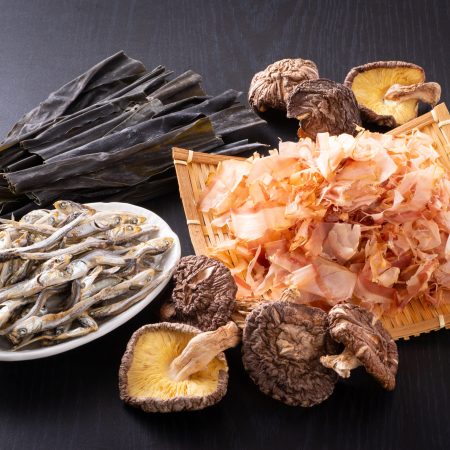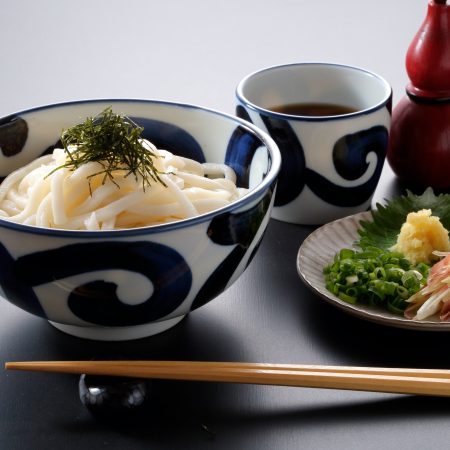Udon deliciousness / The Science of Koshi
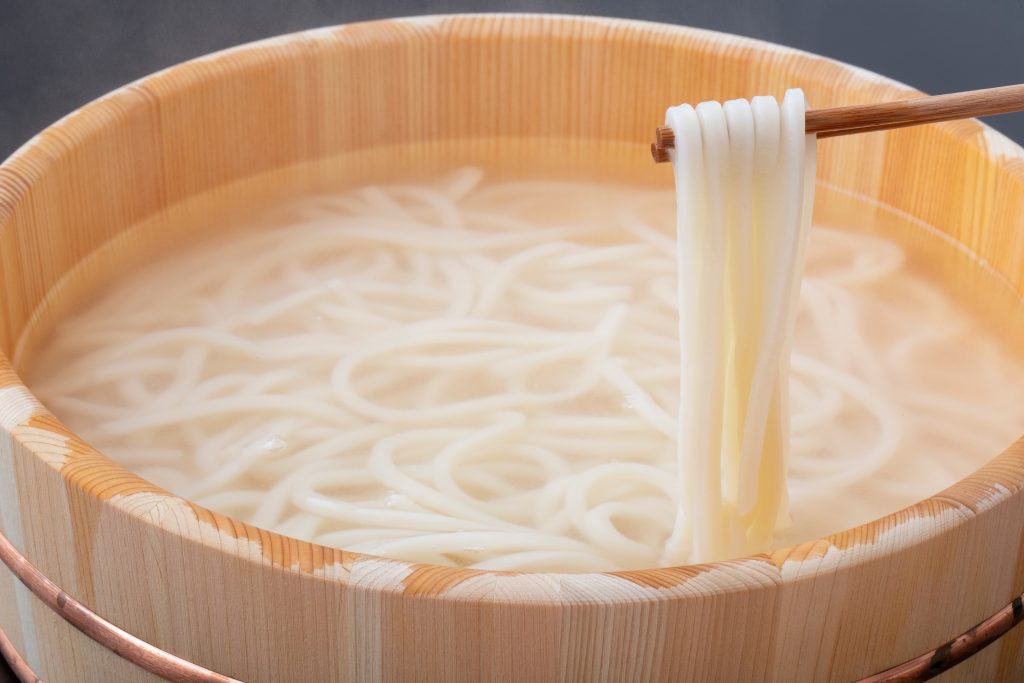
Koshi refers to the state in which the noodles have a “sticky texture” and “firm elasticity. Let us consider “Koshi” as one of the requirements for good udon.
Paragraph 1.wheat flour
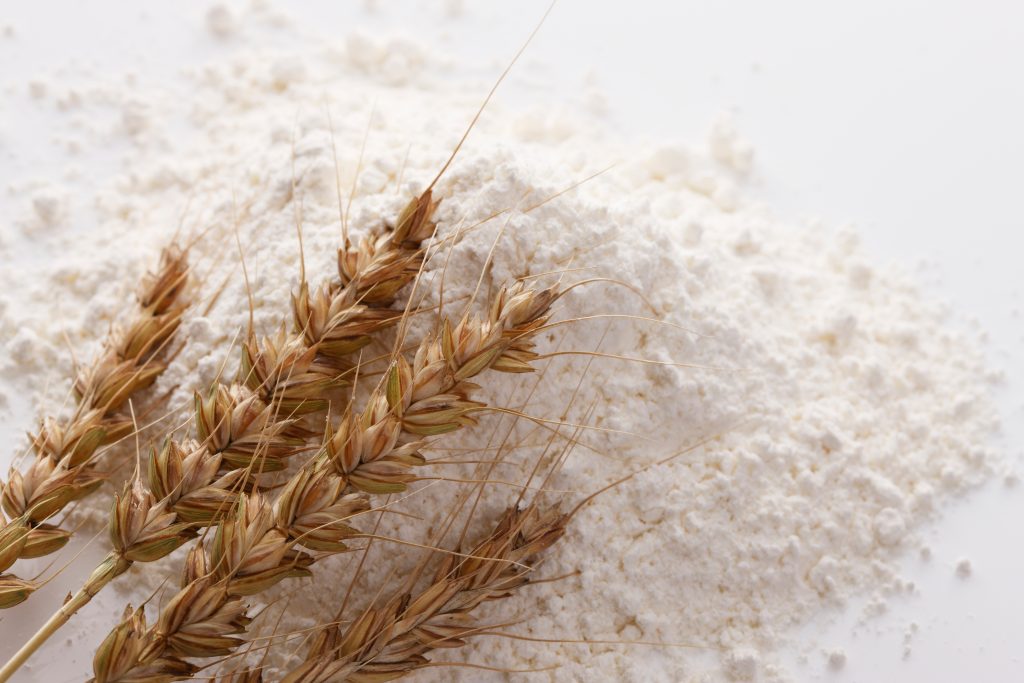
Udon noodles are made with simple ingredients: flour, salt, and water.Wheat is the source of “flour”. There are many types of wheat, and they are classified in various ways.
<The classification of wheat according to the season in which it is cultivated is as follows.>
Winter wheat: Seeds are sown in the fall and harvested in the winter.
Spring wheat: Sown in the spring and harvested in the fall.
<Hard wheat: Wheat is sown in the fall and harvested in the winter.
Hard wheat: Wheat with hard grains.
Intermediate wheat: Wheat with normal grain hardness.
Soft wheat: Wheat with soft grains.
The hardness of wheat grain is proportional to the amount of protein contained in the wheat.
- Hard wheat” is wheat that contains a large amount of protein. The flour made from this hard wheat is “hard wheat flour.It is suitable for making pasta, Chinese noodles, etc.
- Medium-strength flour is made from “intermediate quality wheat. It is suitable for making udon noodles.
- Soft wheat flour is used to make light flour. It is suitable for making okonomiyaki, cakes, etc.
Paragraph 2.gluten
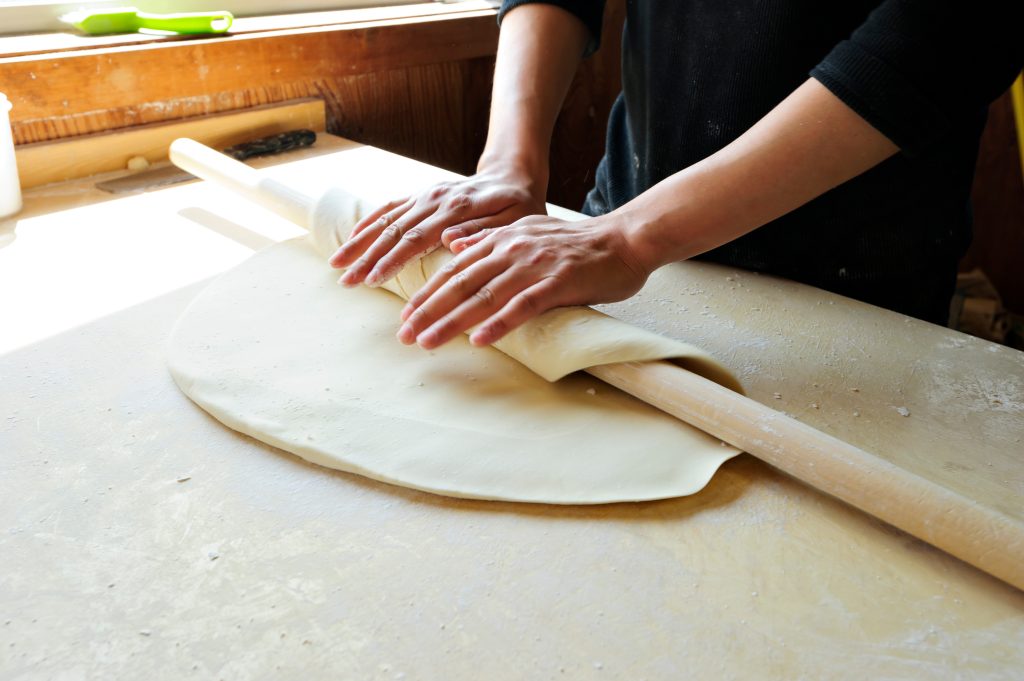
Gluten is a type of protein produced by wheat, and it is this gluten that gives udon its unique sticky texture.
Flour, the material used to make udon, contains two main types of protein (glutenin and gliadin). Glutenin requires strong force to pull and stretch, while gliadin is soft and has opposing properties. When twice as much water is added, glutenin and gliadin bind water molecules and become fully stretched. These two are then bound together and called “gluten”. Thanks to the bonding of these two types of proteins, udon noodles do not shrink and retain their shape even when cold.
Gluten is what gives udon its elasticity and stickiness. The “koshi” of udon means a glutinous yet elastic feeling. It is different from the hardness you feel when you bite into a noodle, and refers to the feeling of elastic resistance, or so-called chewiness.
Paragraph 3.salt
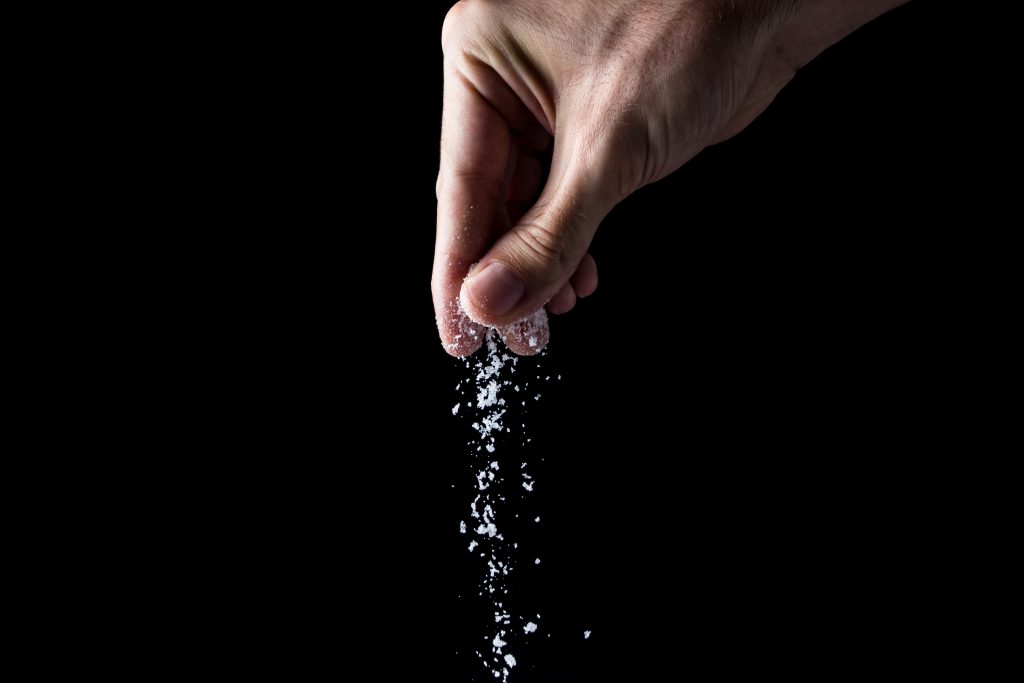
One of the differences between the preparation of udon and soba is that udon requires the addition of salt, whereas soba does not. As explained in “Section 1.2 (Gluten)”, the binding of two types of proteins, glutenin and gliadin, is important for the firmness of udon, but there is one more important factor to make the firmness stronger. That is “salt.
The proteins bind together in a mesh-like structure, and the gluten, which stretches without tearing like chewing gum, is further tightened by the addition of salt, making it more sticky and elastic.
The more salt and water you add to the flour and knead well, the more the proteins are entangled, the more firmly the gluten is formed, and the more elastic it becomes. Salt dissolves proteins, and when heated, the dissolved proteins harden, creating firmness, consistency, and chewiness.
Paragraph 4.mature
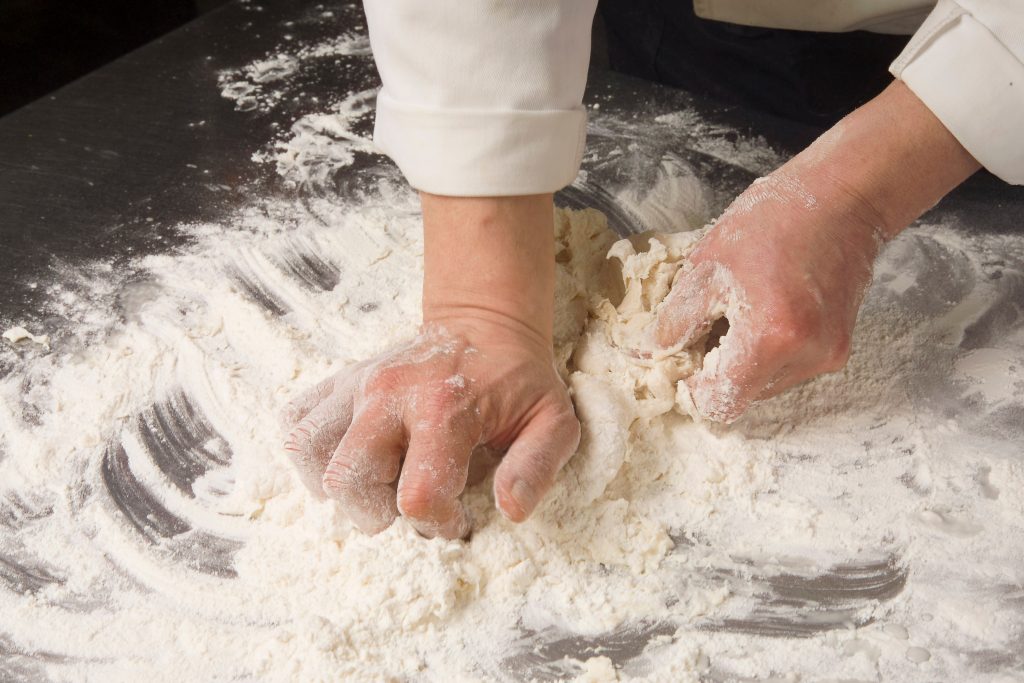
Simply kneading wheat flour with water and salt to make udon dough does not make udon. In order to make udon dough into udon, it is necessary to “let the dough rest for a while. Letting the dough “rest” is a process to “ripen” the dough and stabilize it.
Then, why is the process of “letting the dough rest,” or “ripening,” necessary?
Ripening gives udon elasticity, stickiness, and a strong firmness. It also allows water to fully penetrate the flour particles and removes air bubbles that cause the noodles to lose their transparency. The time and temperature required for ripening varies depending on the season, temperature, and other conditions. Generally, the ripening time is about 30 minutes in summer when the temperature is high, 1-2 hours in spring and fall, and 2-3 hours in winter, and the temperature should be about 25-28℃. Sanuki udon noodles are slowly matured for at least 2 hours. However, if it is left to mature too long, the dough will easily break off due to decomposing enzymes.
Paragraph 3.Comparative Study of Regional Differences in Udon Noodle Koshi
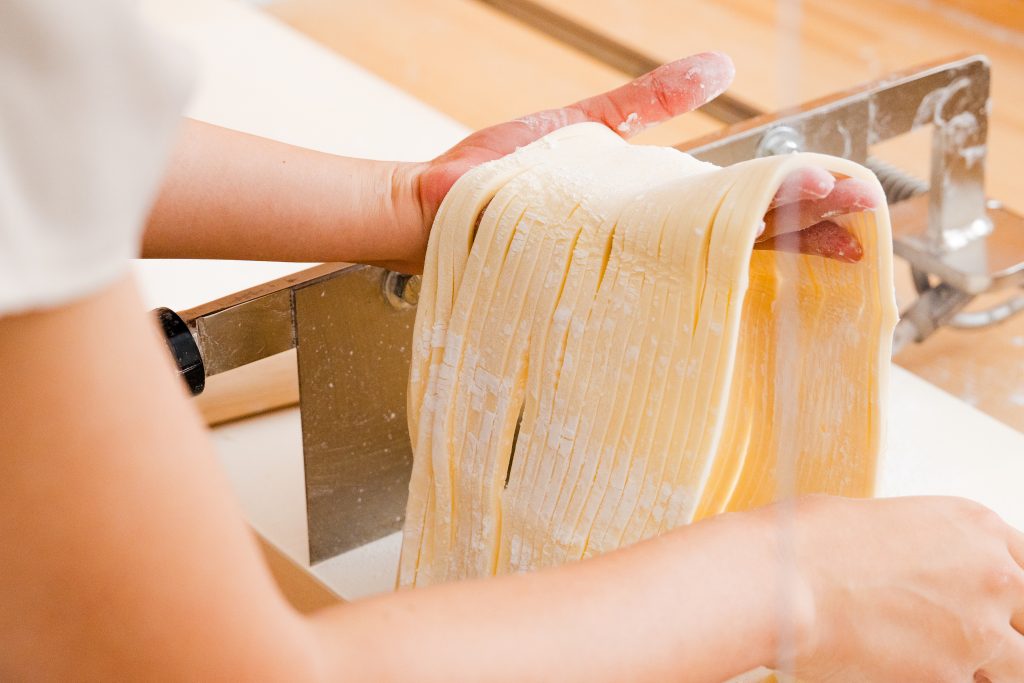
Difference in Koshi between Sanuki and Osaka
In order to give udon a strong firmness, the moisture content of the noodle immediately after boiling is important. The outer surface of the udon noodle immediately after boiling is about 80% water content, while the inner surface is about 50%, and this difference in water content is what makes udon tasty, “soft-looking but chewy at the end and firm”.
Sanuki udon is characterized by its extremely strong texture, while Osaka’s udon is not so strong. Although Sanuki and Osaka are close to each other in terms of region, their udon cultures are quite different.
In Sanuki, udon is eaten only with soy sauce, and the noodles are the core of the taste. On the other hand, Osaka’s udon culture is completely opposite to Sanuki’s, where the emphasis is not on the noodles’ firmness, but rather on the “umami of the broth” (the taste of the soup).

